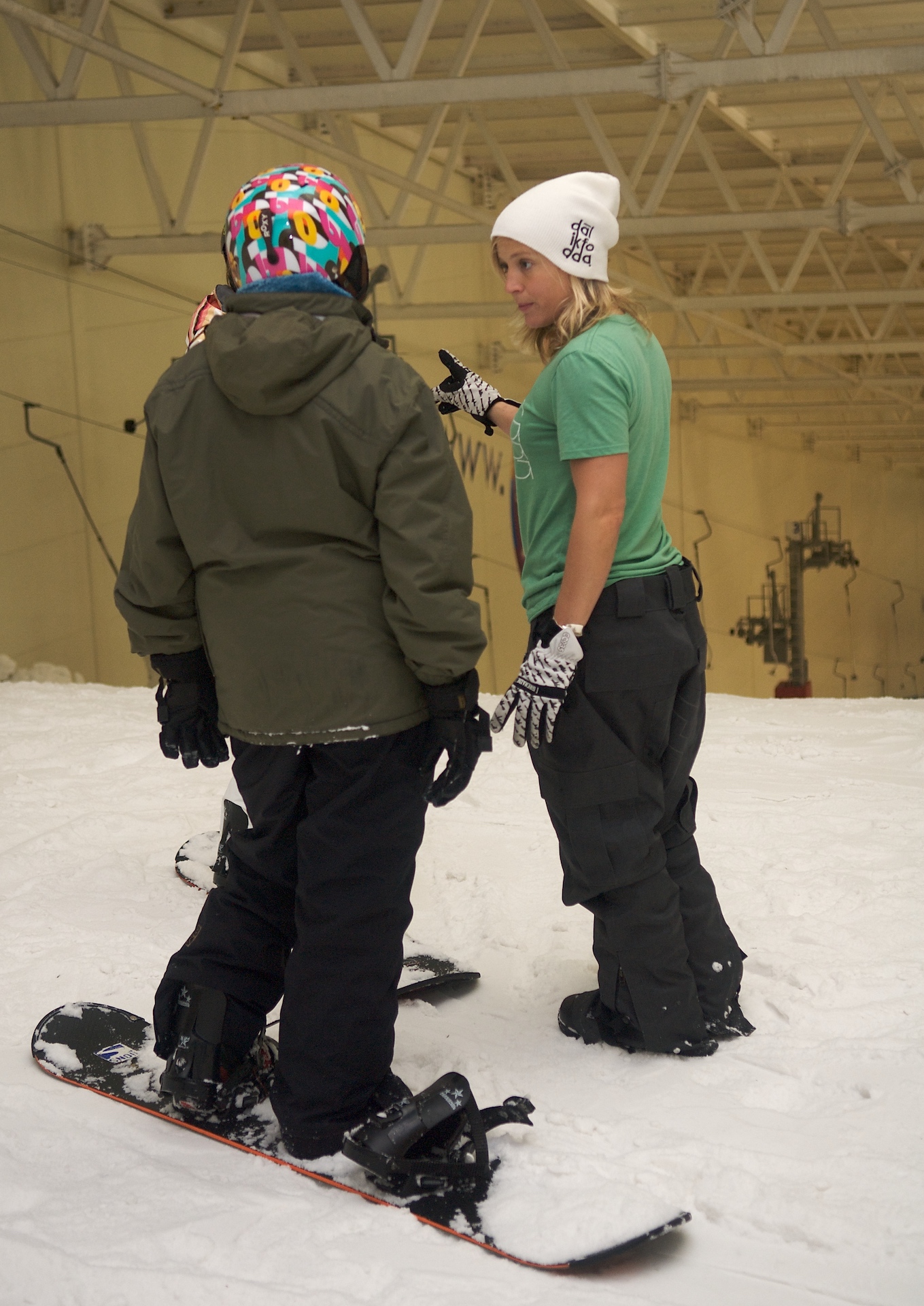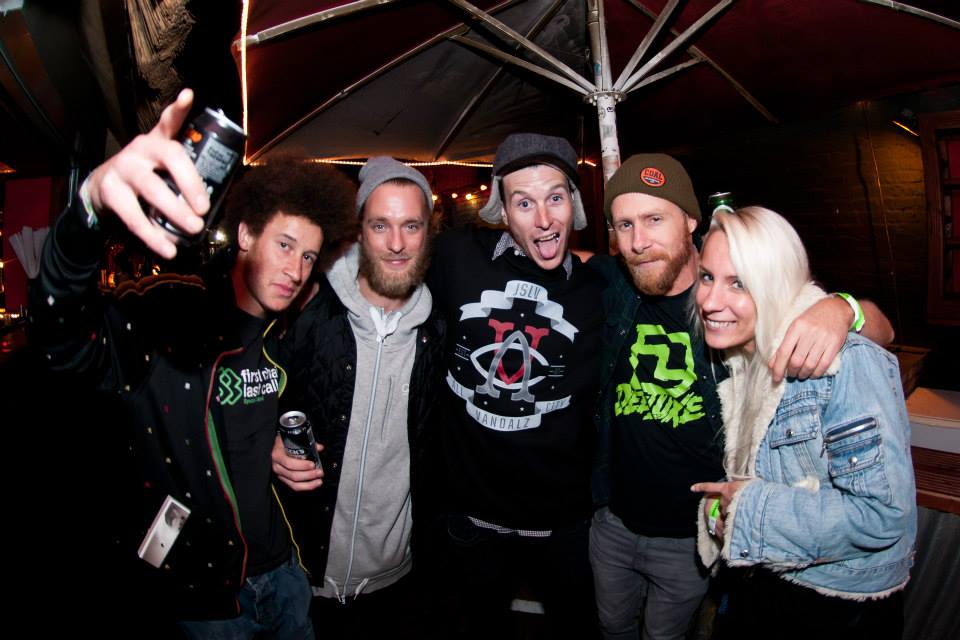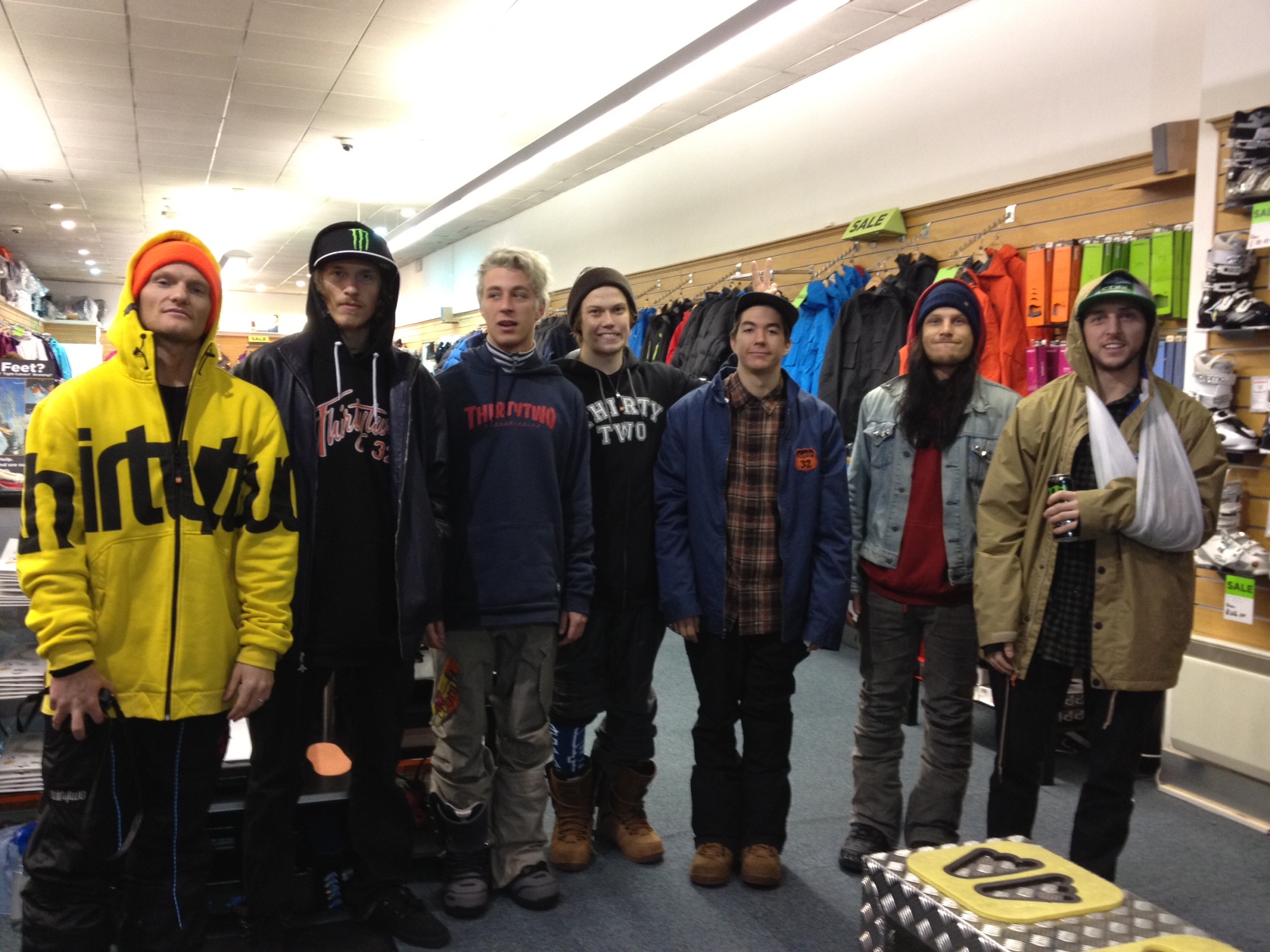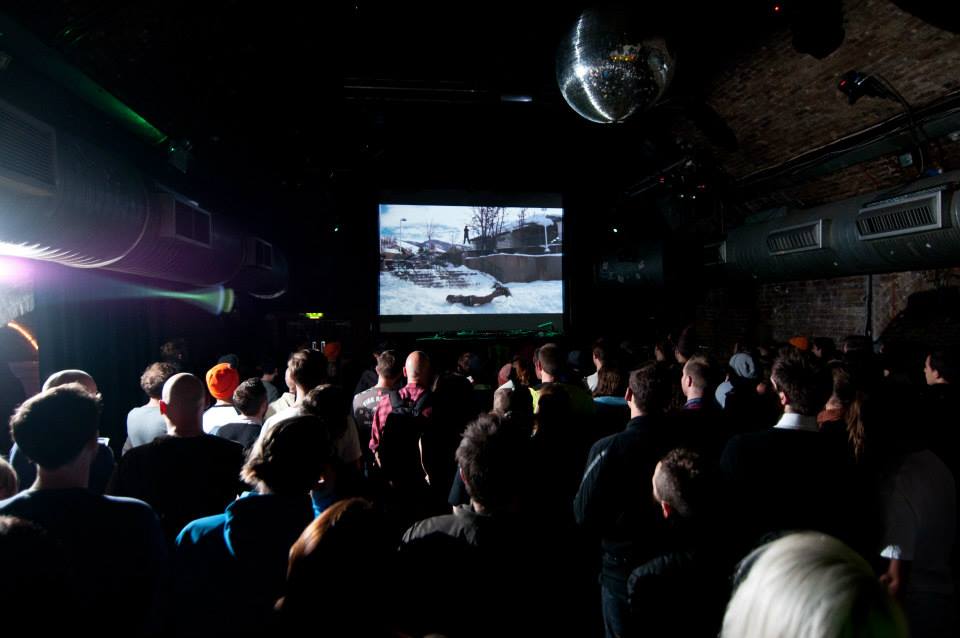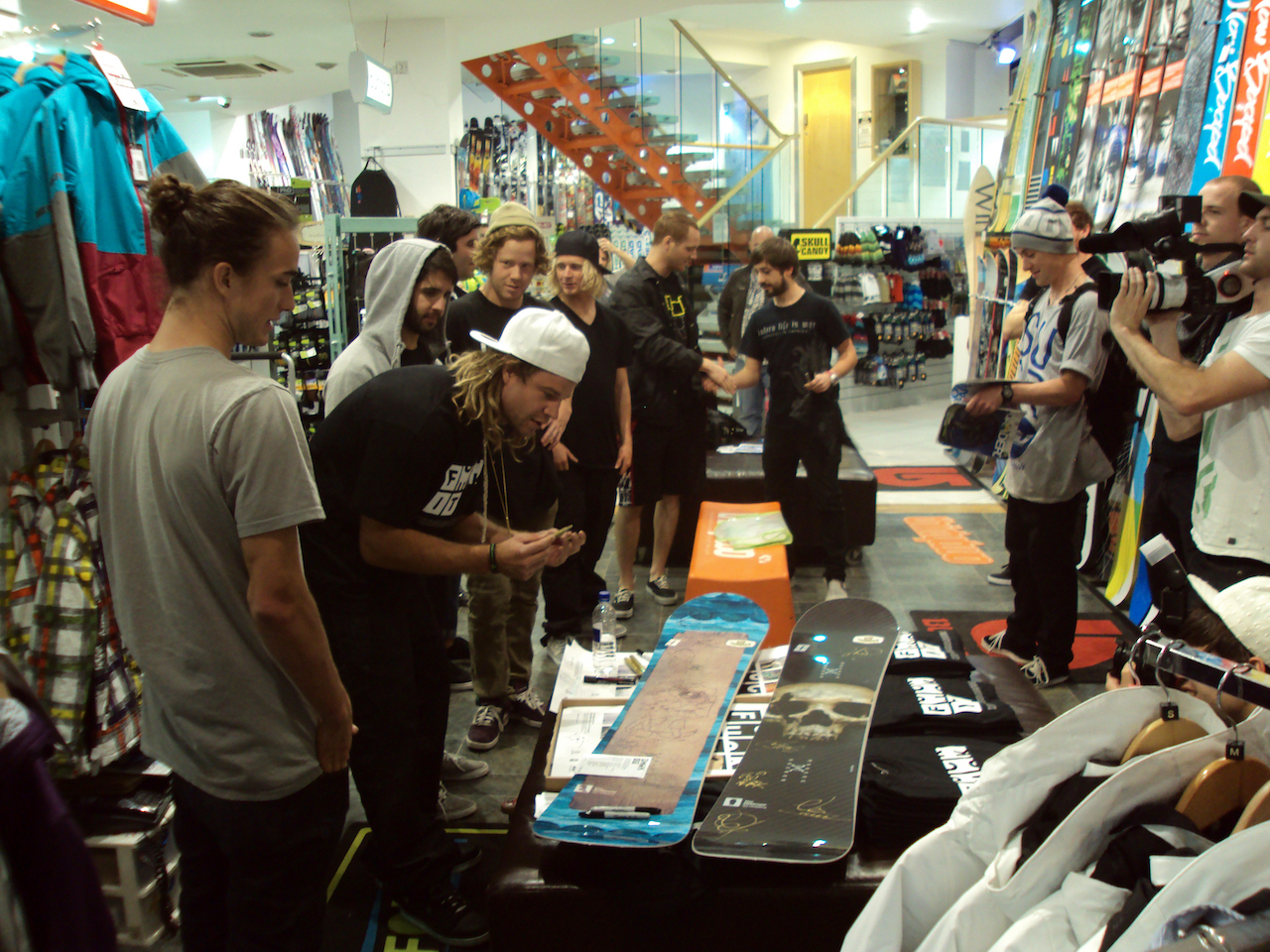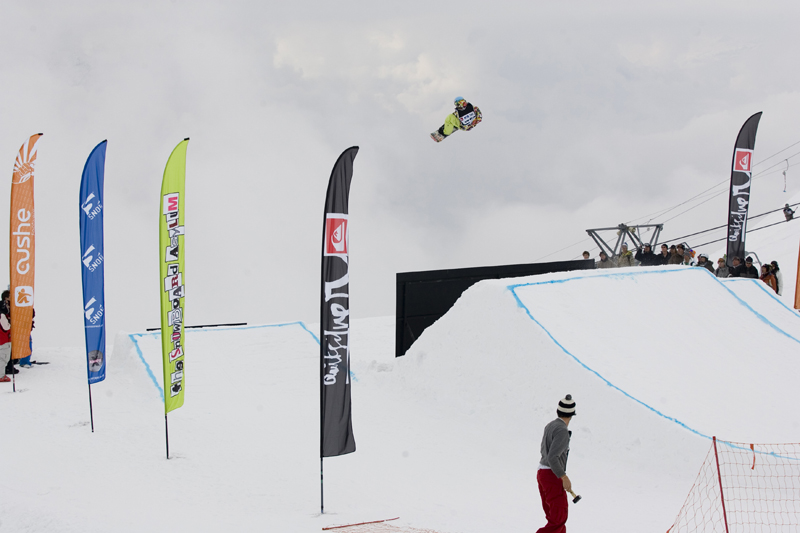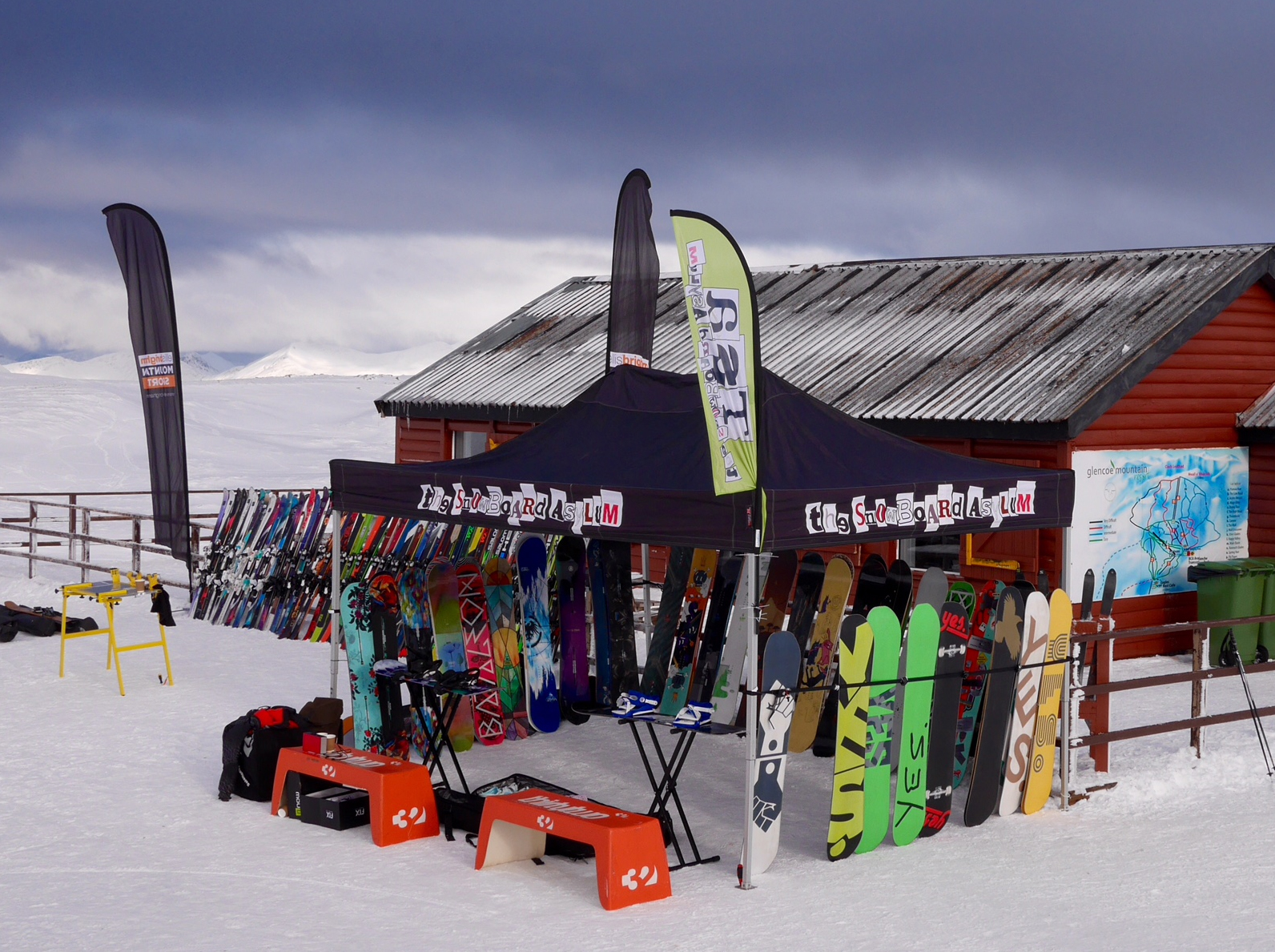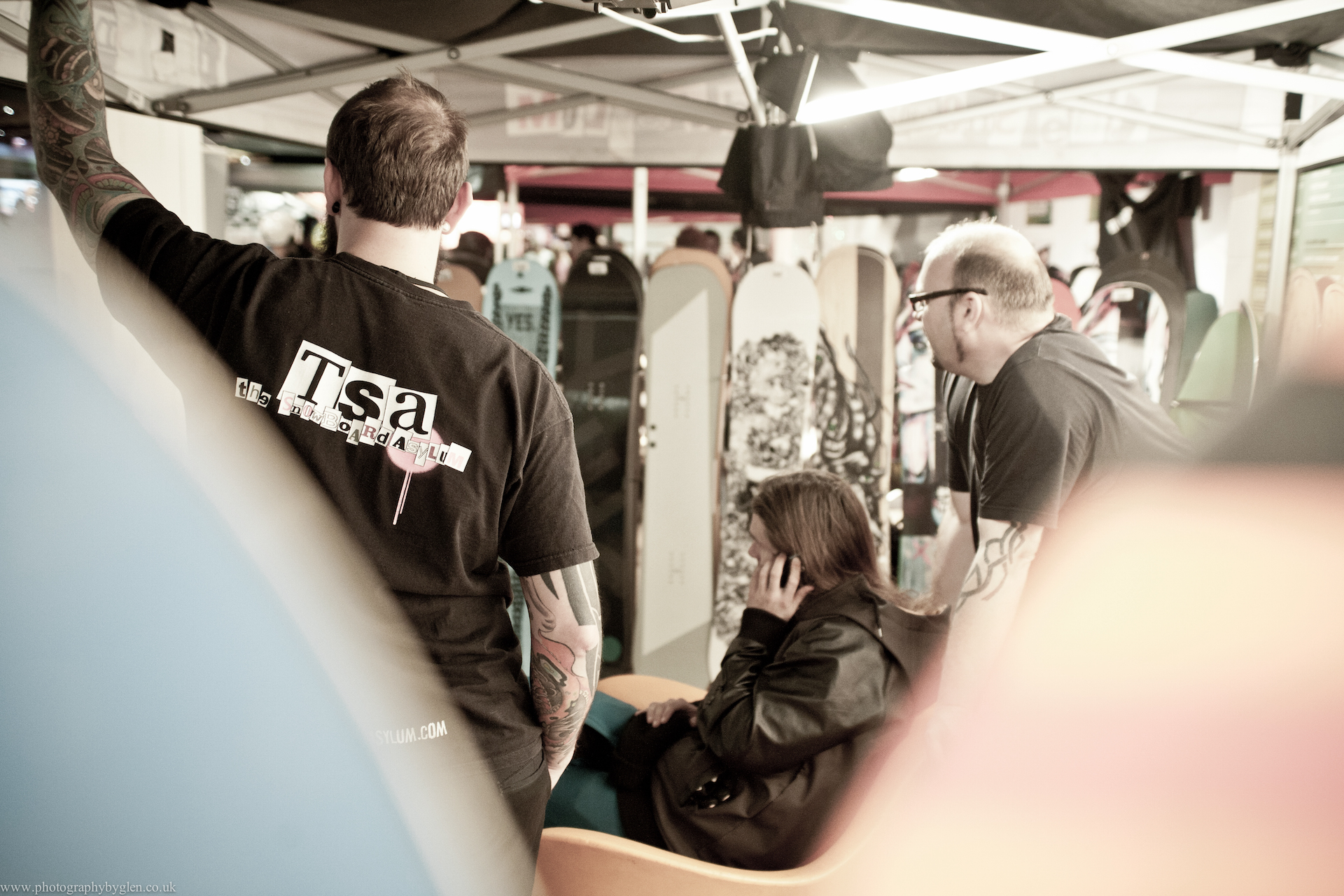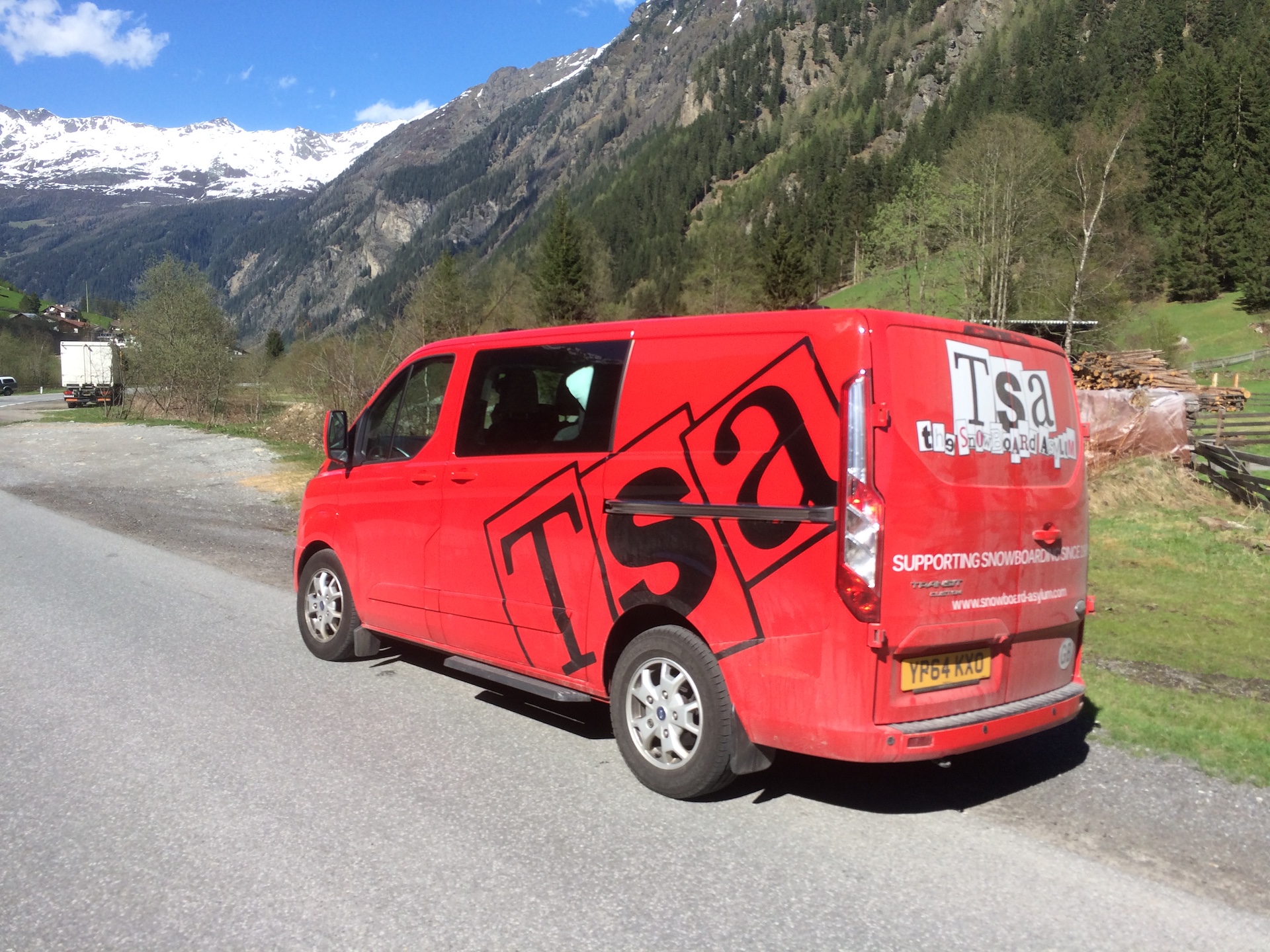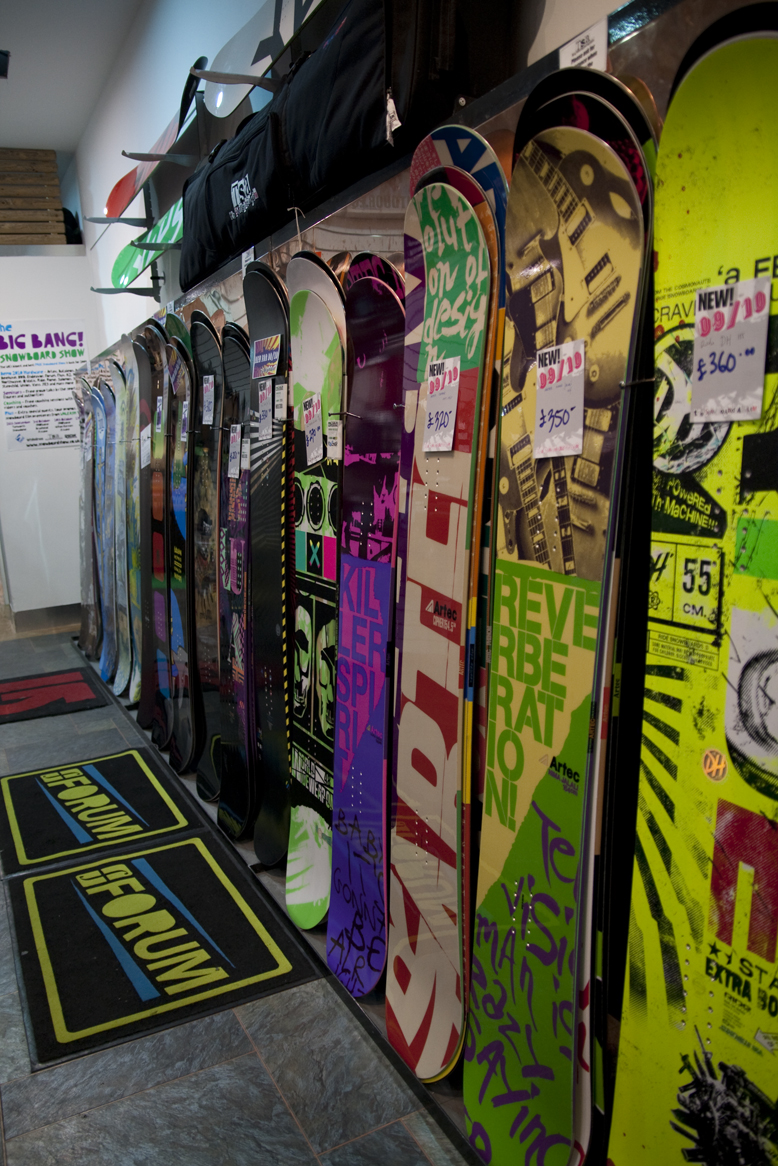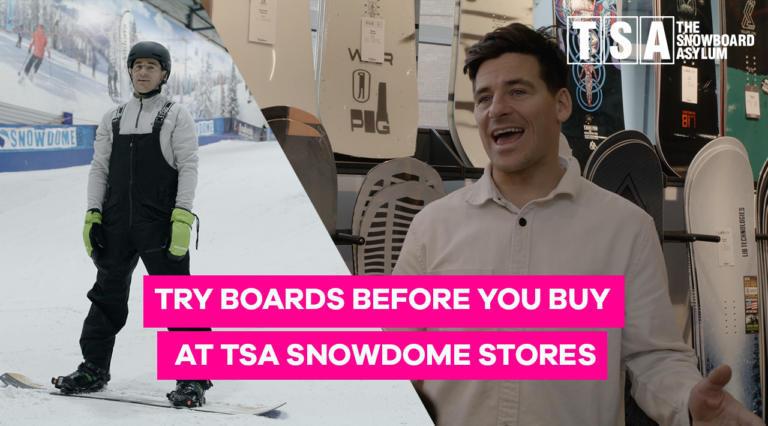Above: TSA Presents, ABSINTHE Dopamine Premiere.
In the summer of 1996 I jumped on a train to Manchester and made the pilgrimage to The Snowboard Asylum in Castlefield. I was 17 at the time, completely obsessed with snowboarding, and the chance to while away an August afternoon drooling over gear – maybe even buy a t-shirt or hat and reaffirm my identity as a rider – was not to be missed.
“The story of TSA begins, like a typical British winter, at the Earl’s Court Ski Show”
I followed the directions I’d memorised (no Google Maps back then) and found the quiet backstreet on which Ellis Brighams – the ski shop – was located. Down in the basement, like a teenager’s hangout, was TSA. The floorspace was bursting with gear from all my favourite American brands. To a kid who nerded out on mags and videos, who hadn’t yet saved enough cash for his own board, it was like stumbling into aladdin’s cave.
And right there, behind the desk, was my hero Steve Bailey: the undisputed king of dryslope and hands down the coolest rider in the country. He looked up as I entered and invited me over to join him watching a new VHS release, Subjekt Haakonsen. Erm, sure.
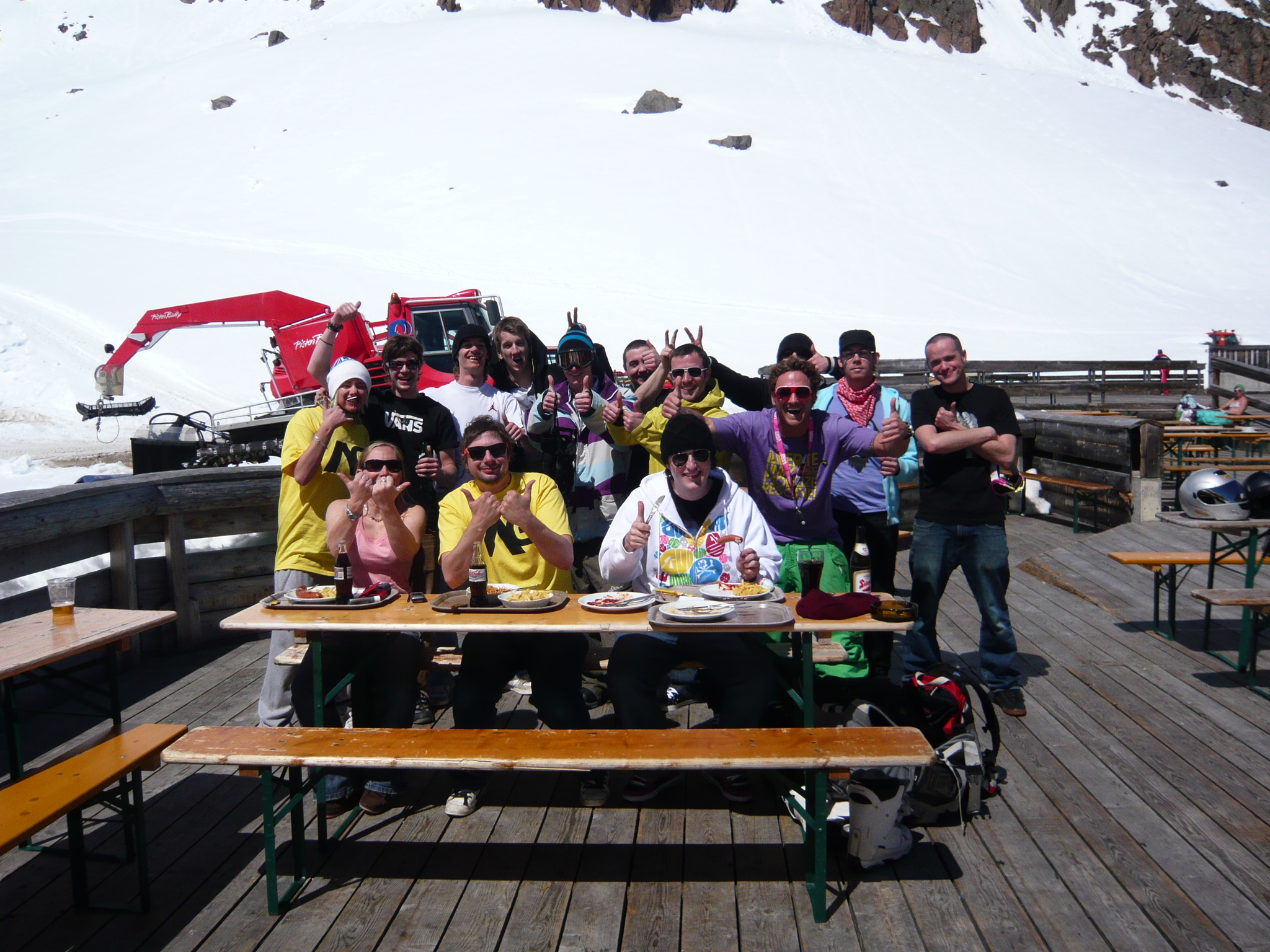
Little did I know, as I nervously hung out with Steve at the counter like Wayne and Garth backstage with Alice Cooper (“We’re not worthy!”) but a few years later I would land a job in this very shop, saving money for my third season. In fact I’d make lifelong friends there amongst the staff – a mix of talented riders, artists and straight-up characters – and mix with customers from all walks of life, united by their love of the shred. It’s no exaggeration to say TSA played a key role in setting me on my current path through life.
That experience, says head honcho Jeremy Sladen, is exactly what The Snowboard Asylum is about. For more than 30 years now, its chain of stores has represented not just a place to purchase kit but a touchstone for the UK snowboarding community.
